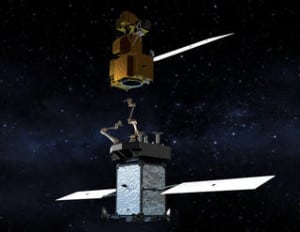
The Senate Appropriations Committee (SAC) has moved to preserve NASA's Restore-L satellite-servicing mission, rejecting the agency's proposal to nix the program.The committee, which approved its fiscal year 2018 Commerce, Justice, Science (CJS) appropriations bill July 27, included $130 million to continue Restore-L. The legislation now heads to the full Senate for its consideration.Acting NASA Administrator Robert Lightfoot testified before the SAC’s CJS subcommittee in late June that his agency had decided to de-fund Restore-L and focus instead on developing servicing-related…

 By
By 











